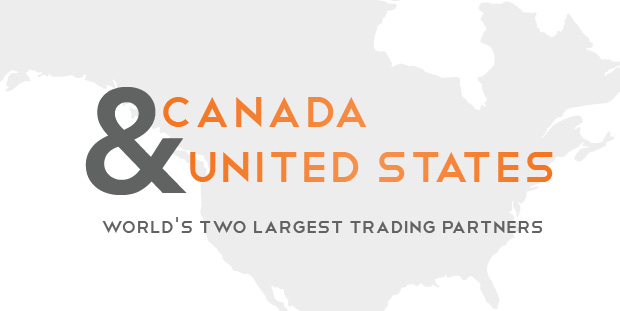The U.S and Canada are the world’s two largest trading partners. As industries change, trade volumes continue to grow even as regulations evolve. To give some perspective on what that claim means, truck borne trade with Canada alone was $235 billion in 2001 and the Detroit/Windsor border saw $79.7 billion in trades.
But, despite these large numbers and positive trade relationship, multiple reports have highlighted the numerous difficulties travelers and carriers alike meet at the border as a result of additional security and a shortage of federal inspection services (FIS) staff. Border management systems and trade policies were costing the U.S. and Canada an estimated $7.52 to 13.20 billion in 2003. These numbers are all a result of a combination of border transit times and uncertainty, other border related costs borne by manufacturers and carriers for duties, broker fees, customs administration, etc., and costs for inspection staffs borne by the two governments.
These problems don’t all stem from security related issues though, as trade between these two countries can be complicated and in-depth. Issues with trade tend to center around more legal issues such as varying regulation and currency rates.
Regulations
The most complicated issues arise under this first category. Shipping between the U.S. and Canada requires an in-depth understanding of regulation and compliances as there are several areas where regulations differ between the two countries. For instance, Canada maintains stricter requirements for drivers than the U.S. DUI regulations may vary and someone allowed to drive in the U.S. may not be permitted to in Canada.
There are also regulation challenges when it comes to agricultural products, a high volume export from Canada into the United States. Shippers must manage not only transportation of the goods but also comply with regulations such as the Public Health Security and Bioterrorism Preparedness and Response Act of 2002, and FDA requirements governing facility registration and inspections.
One positive aspect of trading with Canada, however, is that for the most part, our regulations are similar. In fact, Canada now accepts U.S. export data for its imports, and vice versa as opposed to the Mexico border where paperwork must be filed on both sides. Technology is easing the paperwork burden as well and electronic filing systems have been steadily evolving in order to eliminate the need to carry and present papers at the border.
Currency Challenges
Fluctuating currency values can impact the cost of trade and sales. When rates vary slightly, the countries can compete. When rates are equal, an influx of U.S. product moves into Canada but not much Canadian-produced product moves to the U.S.
Solutions
But these challenges are not enough to prevent further trade and previous years have shown an influx U.S. retailers into Canada particularly in the fastest growing segment of e-commerce. For U.S retailers, Canada’s robust population presents a new and vast audience.
To counteract many of these challenges, logistics companies can look for solutions that reduce spending. At TOC Logistics International Inc. we center conversations around solutions that reduce spend rather than lower price. For example, by increasing container utilization to above 85%, our programs have proven to reduce the total number of containers used, which drastically reduces total transportation costs. Reducing costs will help ease much of the burden of shipping between Canada and the United States. Since trade between the two countries will only continue to grow, understanding challenges, regulations, and costs is key to taking advantage of the perks of trade with Canada.
For more information on TOC Logistics International, visit: toclogistics.com.
Sources:
http://thetbwg.org/downloads/CanadaUSBorderCostsReport.pdf

